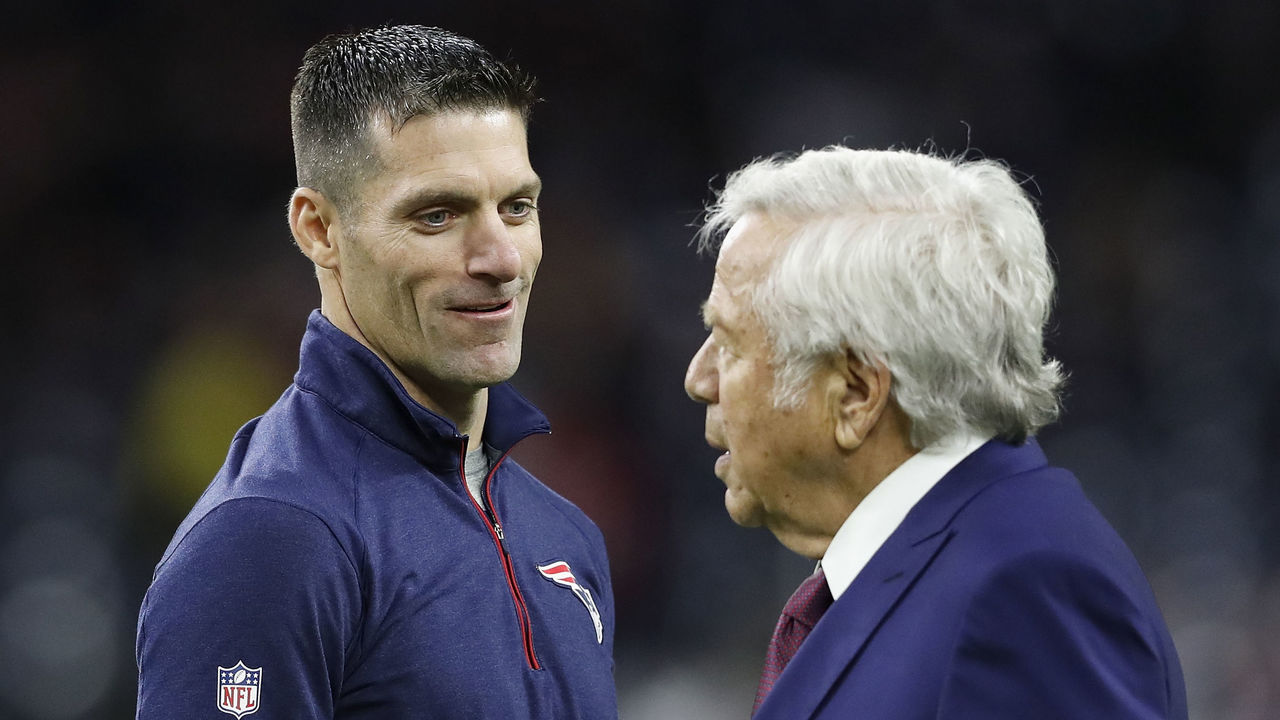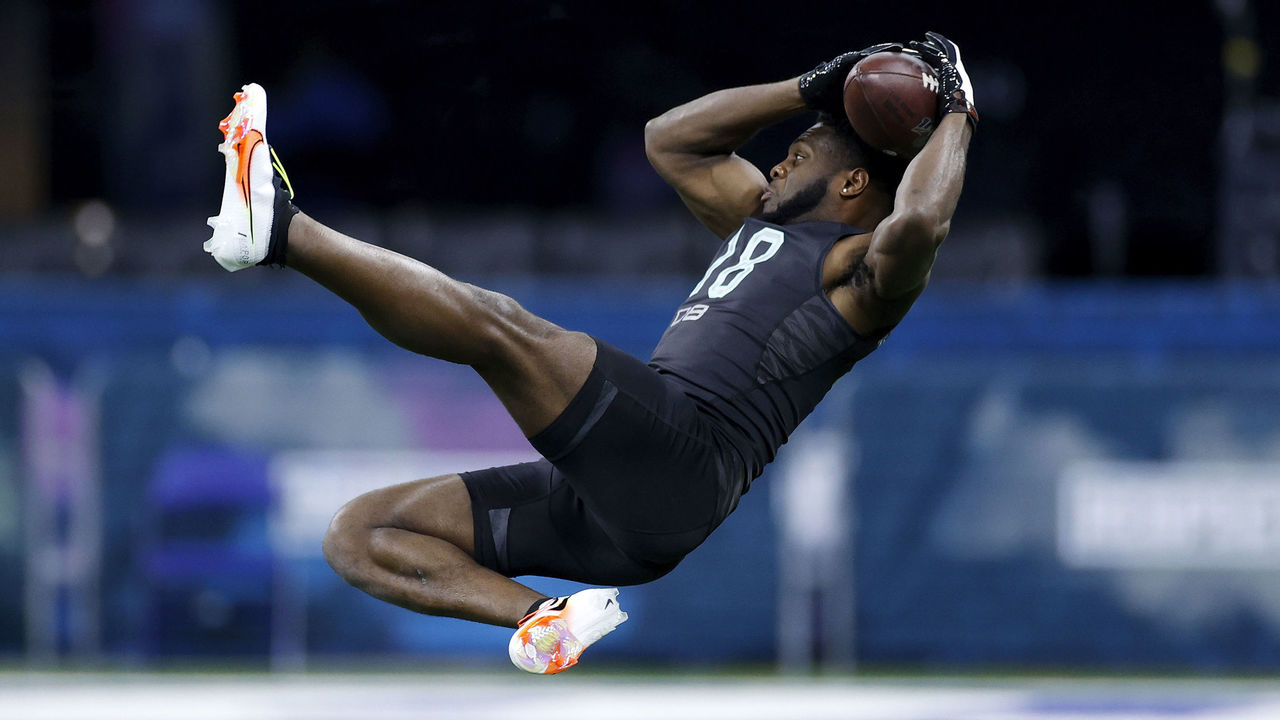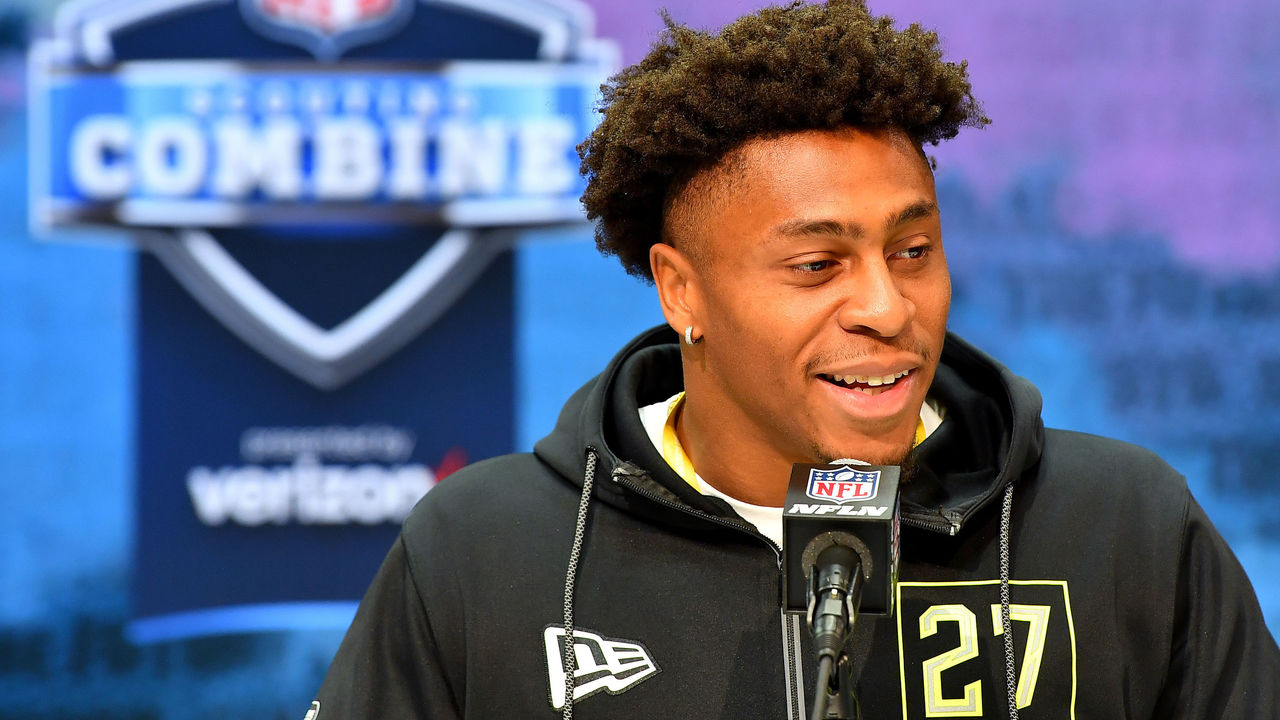How the data age will transform scouting and the NFL draft
During last month's Sloan Sports Analytics Conference, Nick Caserio shared a story about how predictive analytics changed the way the New England Patriots scouted a particular position.
"I don't want to mention the position," Caserio said. "But there was a view that, 'OK, length is important for this position,' whether it's height, whether it's arm length. We actually went back and looked at that data and that information, and there wasn't a correlation.
"This goes back to your scouts. In their mind, they're watching a player and you see it in the reports: 'He lacks length,' which, if you're thinking length is an important criteria, it's going to predict success. Well, the position we actually studied and looked at said actually not. Some of our best players, they didn't have the requisite 'length,' but they were some of our best players."
Caserio is now the general manager of the Houston Texans after nearly 20 years serving in a variety of roles with the Patriots. His anecdote neatly summed up how the application of data and analytics is influencing team-building approaches around the NFL.
"I think that's what it just forces you to do," Caserio added. "Just go back and maybe take another look and look at it through a different lens."
 Nick Caserio, left, and Patriots owner Robert Kraft in 2019. Tim Warner / Getty Images
Nick Caserio, left, and Patriots owner Robert Kraft in 2019. Tim Warner / Getty ImagesThe NFL draft is still largely a crapshoot that involves projecting a player's future development, an inexact process that also factors in murky characteristics like intangibles, confidence, and maturity. Teams are now armed with more information than ever before - at all levels of football operations - and in the years ahead, they'll have access to even more data. The challenge is figuring out how best to apply that information and how to adjust those applications over time.
It's only been three years since the NFL began providing league-wide access to player-tracking data that dates back to the 2016 season. As Los Angeles Rams chief operating officer Kevin Demoff explained at Sloan, that's enough time and enough information to allow teams to fine-tune some statistical models that may have influenced past decision-making.
"Five years ago, not every team had an analytics department, or if they did, they didn't necessarily talk about it," Demoff said. "We can now look back after four or five years on decisions we made primarily based on the analytics and refine them. That wasn't true four or five years ago."
There's still a long way to go, particularly with regard to player tracking, where the ample data that's become available in recent years is constantly being applied in new ways. What's largely missing from the scouting process is the presence of that tracking data at the college level, which would allow NFL teams to make more quantitative assessments about, say, a linebacker's maximum speed, a receiver's ability to create separation, or a safety's reaction as a quarterback starts to throw.
Some of this is already happening. Last year, Robert Mays, then writing for The Ringer, delved into how tech companies Sportlogiq and Telemetry partnered to use video analysis to develop a tracking system for college players. But the surface is really just being scratched.
 Tracking data on college players could provide far more information to NFL teams than its annual combine. Joe Robbins / Getty Images
Tracking data on college players could provide far more information to NFL teams than its annual combine. Joe Robbins / Getty Images"When the college tracking stuff does come online, it's really going to be a watershed," ESPN's Brian Burke said last month at Sloan. "That's really where the money's going to be. Teams are going to need those models, they're going to need analysts that are going to make sense of the tracking data. There's going to be a huge payoff when that comes online."
This trend toward increased reliance on data and analytics need not be done at the expense of conventional methods like watching tape and utilizing qualitative scouting reports. If anything, they can complement each other, as Demoff said Rams GM Les Snead tries to have his scouts and personnel people do.
"I think as the league gets younger from a coaching perspective, from a scout perspective, from a GM perspective, I think those walls will come tumbling down," Demoff said of the divide between traditional scouts and data analysts.
"Some of the things you need from scouts - how (players) learn, what their background is, what their work ethic is - is really important, and stressing where they can contribute value, versus where machine learning is picking up some of their blind spots."
At Sloan, Burke provided a specific example. Take an offensive lineman doing a vertical jump at the combine. Jumping straight up in the air doesn't seem to have any correlation to a lineman's ability to do his job at the NFL level. But what if that information is combined with other data sets?
"We have more advanced modeling techniques now, and we can combine them with other information like scout grades," Burke said. "If you combine weight and vertical jumping, now you're getting something. Of course, the heavier guys have a harder time jumping high; that makes sense, right? It's just physics. But when you have a heavier, bigger, stronger guy who can jump high, there's a lot of power in his legs. Some of these metrics really matter in ways we didn't suspect."
 Colts running back Jonathan Taylor at the 2020 scouting combine. Alika Jenner / Getty Images
Colts running back Jonathan Taylor at the 2020 scouting combine. Alika Jenner / Getty ImagesOne of the trickier characteristics for teams to nail down regards a player's psychology, from measuring his capacity to learn, assessing his personality, knowing how he'll fit as a teammate, and gauging his instincts. Quantifying all of that might yet be pretty far off. Burke, for one, noted how difficult it is for findings in psychological studies to be replicated, and how many papers have had to be retracted.
"I would just be very cautious with those kinds of things," Burke said. "I agree it's one of the most import things, if you could measure these personality aspects that are desirable in a player, but there's just no good way to do that."
For now, look for teams to apply statistical modeling to find draft inefficiencies that fit their systems, as the Patriots did when it came to how length applied to that particular position Caserio mentioned.
"Until the league catches up to those studies," Demoff said, "you'll have a short-term window where you'll have a draft advantage."
Dom Cosentino is a senior features writer at theScore.
Copyright (C) 2021 Score Media Ventures Inc. All rights reserved. Certain content reproduced under license.